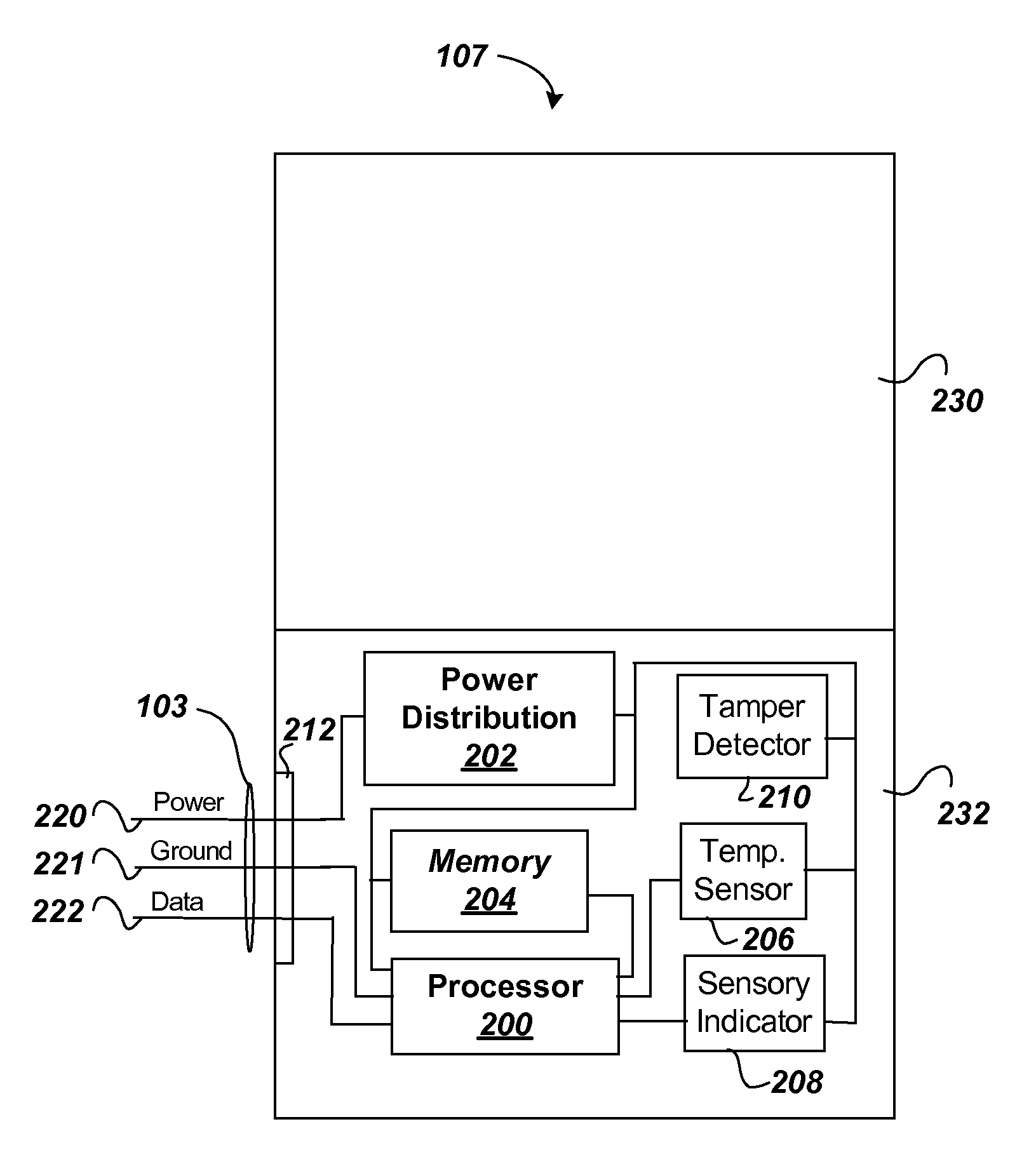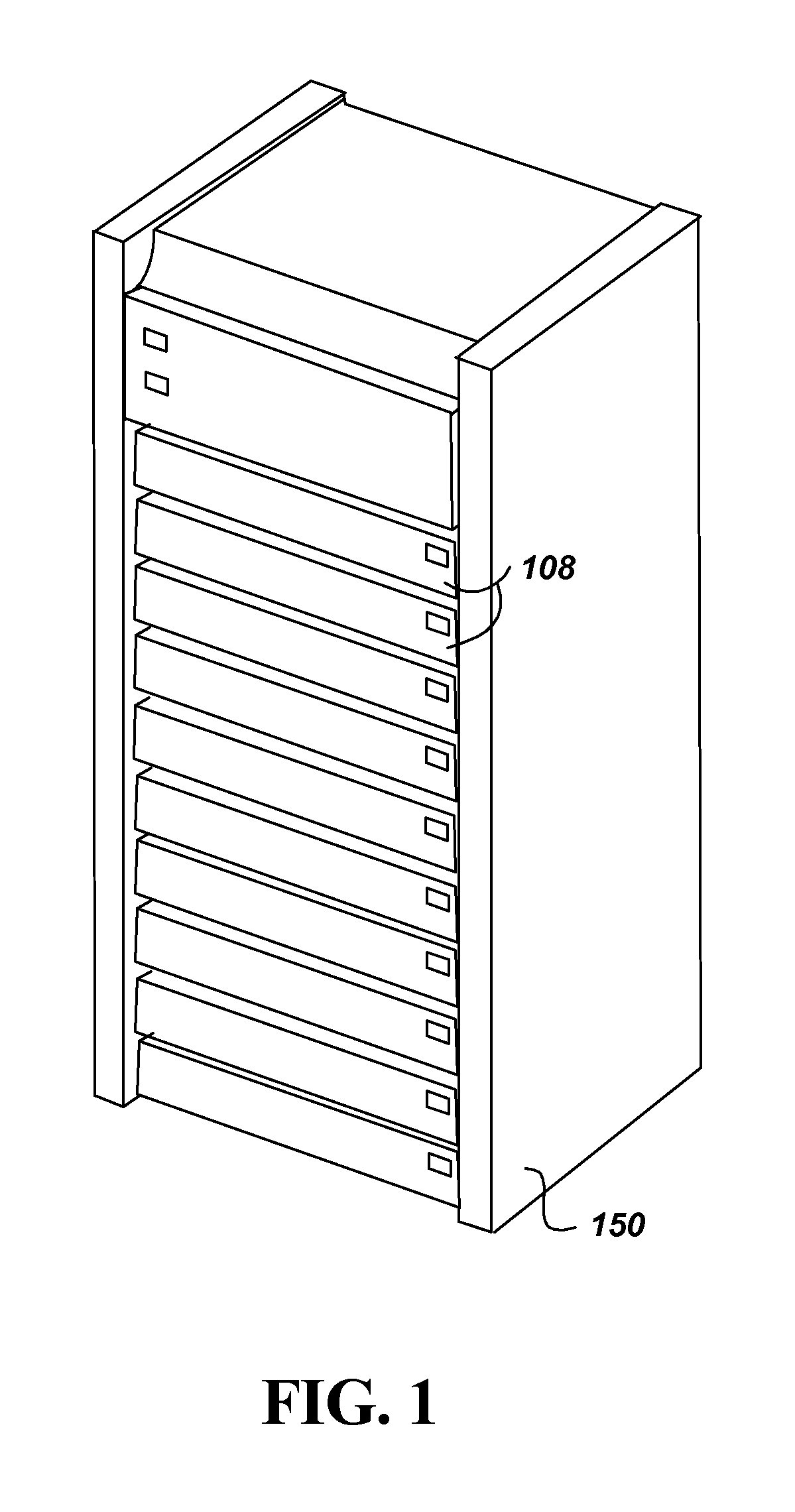Data center equipment location and monitoring system
a data center and equipment technology, applied in the field of information technology (it), can solve problems such as label deformation, label falling off, and easy error-prone approaches, and achieve the effects of quick and easy identification of problem equipment, efficient use of power, and low energy consumption
- Summary
- Abstract
- Description
- Claims
- Application Information
AI Technical Summary
Benefits of technology
Problems solved by technology
Method used
Image
Examples
Embodiment Construction
I. Data Center Monitoring System
[0027]FIG. 2 shows components of a data center monitoring system according to embodiments of the present invention. The components shown include a single equipment rack (ER) 150 containing servers and / or other equipment rack equipment (ERE) 108. A single ER 150 is used for purposes of illustration only, as the system is intended for use with multiple ERs 150 typically found within a data center. The system further includes electronic ID tags (ET) 107, each being attached to an individual ERE 108. A communication and power data link cable (DL) 103 connects the ET 107s to an equipment rack controller (ERC) 101. The ERC 101 then provides a connection over a local area network 119 to a central control computer 120. The central control computer 120 contains a software application program 126 and database 127 to provide for monitoring, location and identification of each ET 107 in real time. Further, an ERC 101 can be attached to each ER 150 or to a group o...
PUM
 Login to View More
Login to View More Abstract
Description
Claims
Application Information
 Login to View More
Login to View More - R&D
- Intellectual Property
- Life Sciences
- Materials
- Tech Scout
- Unparalleled Data Quality
- Higher Quality Content
- 60% Fewer Hallucinations
Browse by: Latest US Patents, China's latest patents, Technical Efficacy Thesaurus, Application Domain, Technology Topic, Popular Technical Reports.
© 2025 PatSnap. All rights reserved.Legal|Privacy policy|Modern Slavery Act Transparency Statement|Sitemap|About US| Contact US: help@patsnap.com



